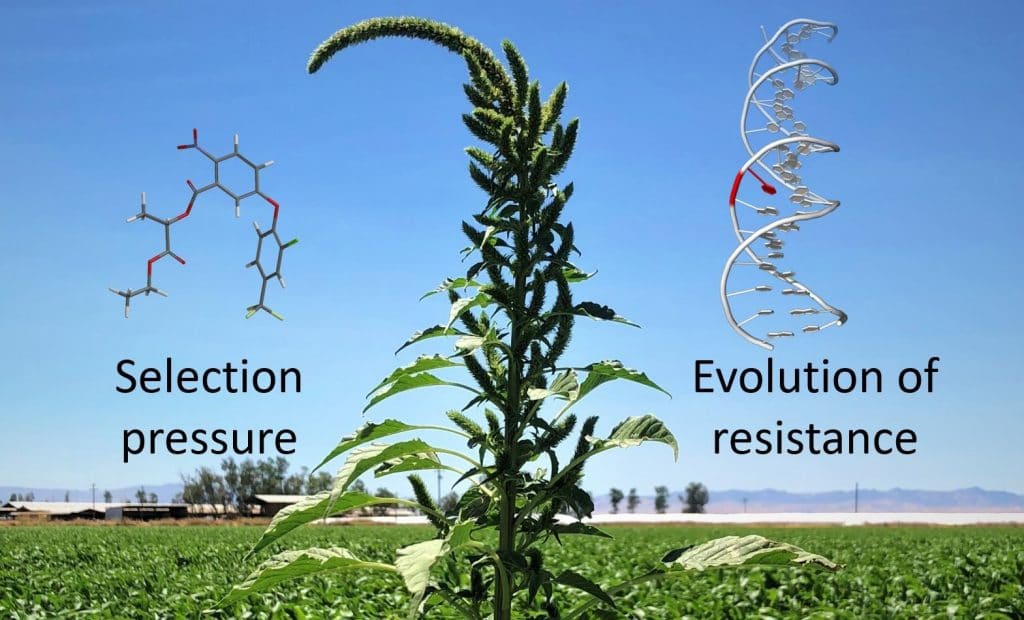If you have ever cared for a garden or a lawn, you know weeds are pesky plants that show up every year without fail. While they come in many shapes and sizes, weeds generally share some characteristics: fast growth, competitive, high seed production, genetic diversity and that one thing that universally defines them— their presence where we don’t want them.
Weeds are not limited to your yard though; they are a pressing issue for farmers globally and they threaten our food supply. The main difference between a homeowner and a farmer’s problem with weeds is that instead of a few square yards of garden, the average American farmer has about 450 acres of land to weed. That’s equivalent to 300 football fields! With that much area to cover, farmers largely rely on herbicides for weed management. These tend to be one of the cheapest and most reliable options farmers have in their tool belt. Yet over the past 50 years, we have learned the consequences of the overuse of some herbicides. The result? Herbicide-resistant weeds that compete with crops and threaten farm viability. This is where my research comes in.
Weeds cannot move away when something harmful, like an herbicide, threatens them. Weeds have evolved to achieve various resistance mechanisms. I study something called target site resistance. Through random mutations, which occur naturally in all organisms, the protein in the weed that the herbicide targets has been structurally changed such that the weed is no longer affected. This resistant protein is then expressed throughout the plant, providing the whole plant with resistance. Weeds that carry such a mutation will survive an herbicide treatment and propagate, spreading this resistance trait to the next generation. Remember our 300 football fields? In just a few generations these resistant plants can spread seeds over that entire farm and beyond to infest neighboring farms.
The good news is that having a resistant weed problem isn’t the end of the story. Researchers like me determine what is causing that resistance and work to give farmers solutions to control the weeds.
I am investigating why certain herbicides still effectively control emerging weed seedlings even though those same plants will survive if sprayed when they are only a few weeks older. Discovering why this occurs, allows us to recommend more effective weed management practices. My research examines the levels of the resistant protein and protective factors in the plants, such as antioxidants, at different stages of growth development. Once I identify the cause of this age-dependent differential resistance, we will use this information to advise farmers on how to control the resistant populations and possibly make more effective herbicide formulations that can overcome the resistance. In this way, we may be able to help farmers use these herbicides in a manner that is less costly—both in dollars to the farmer and the cost of herbicide resistant weeds to our agriculture.
As weed scientists, our goal is to control weeds while improving environmental outcomes. We study resistance mechanisms in weeds in order to better steward our remaining herbicide options and bring in new weed control tools that aren’t chemically based. I enjoy the challenge of studying species that are constantly adapting to new environments and control mechanisms. We can learn so much about evolutionary mechanisms in such a short period of time with these insanely resilient plants.
I am grateful to the Foundation for Food & Agriculture Research and my industry sponsor, Valent, for supporting my continued research and participation in the FFAR Fellows program. As someone interested in having a career in industry, mentorship from my sponsor and having a peer group of FFAR Fellows interested in the same professional goals has been invaluable.
